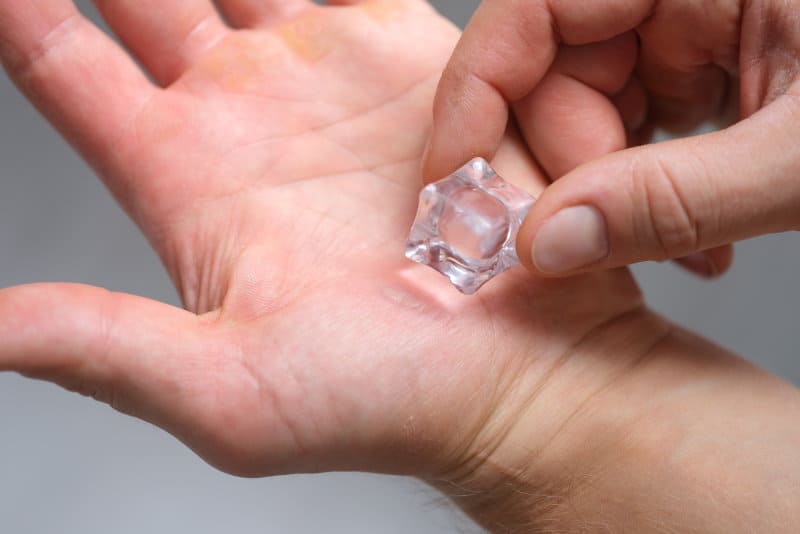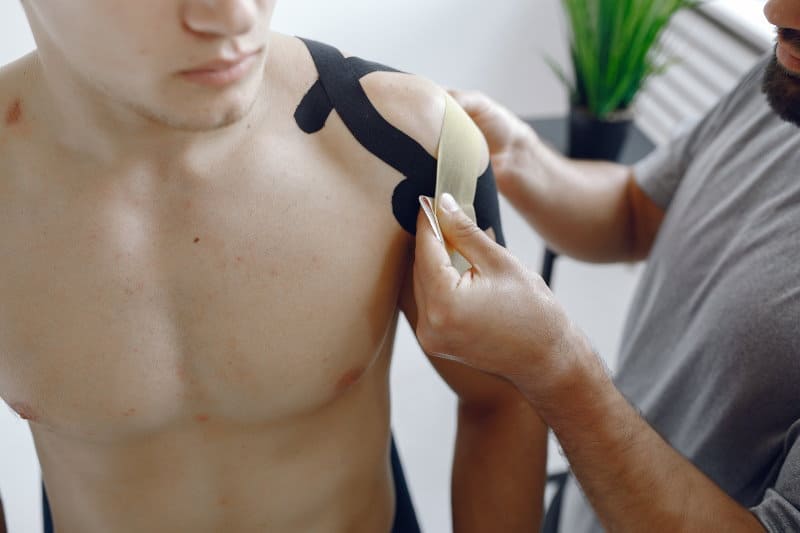Any sport has a laundry list of injuries specific to it, and archery is no exception. Accidents, incorrect form, damaged or ill-fitting equipment can all cause some serious injuries, but there are things you can do to avoid or prevent most of them.
So what are common injuries in archery?
The most common injuries in archery can be boiled down to five types. The easiest to get are blisters on drawing fingers and string slaps, which can occur on the chest or arm. Shoulder injuries, specifically rotator cuff injuries, and injuries caused by bad handling are also common in the long run.
A lot of these can and very much should be avoided, as they can get dangerous. Read on if you’d like to know more about each type of archery-related injury, how it happens, and the different ways to avoid it.
What Are Common Injuries in Archery?
Let’s address each type of injury in more detail, shall we?
String Slap
This is probably the first archery-specific injury that comes to mind, and the one that most beginners experience.
String slaps happen when the string “slaps” the chest or the inside of the arm holding the bow after being released from a draw. They’re not very dangerous and won’t cause much more than a bruise, but it’ll be a painful one.
How It Happens
Simply put, a string slap happens when things—specifically, body parts—get in the string’s way after being released, and that can only happen due to poor form or posture.
Drawing form, loose clothes, or even the wrong kind of bra can all contribute to the likelihood of getting string-slapped.
How to Prevent It
The simplest solution is to invest in arm and chest guards. These will almost eliminate the chances of getting any sort of string slaps, especially when they’re the right size. You should also wear tight-fitting clothes and a good sports bra.
The even better way to prevent string slaps is by paying close attention to your form. If you’re standing, holding your bow, and drawing correctly, these shouldn’t happen. That’s how pros avoid them without needing armguards.
Finger Blisters

Most people might not expect to get blisters from archery, but they’re possible in your hooking fingers. Blisters are pockets of water or blood, which can show up as a dark-red spot on the fingers.
Blisters occur when the skin is separated internally. This happens due to the friction that happens between the bowstring and your fingers.
How It Happens
When fingers are placed incorrectly on the bowstring, they linger on there for a bit too long, causing the bowstring to rapidly rub against your finger.
This might also happen sometimes if you practice for a long time in one go.
How to Prevent It
As with the string slaps, proper form and hooking your string in the right spot will make this injury less likely, but if you’re still new to the sport, that might take some time to master.
In this case, archery gloves can mostly solve this issue. However, they need to be the right thickness for your draw weight. It’s also a good idea to wrap your fingers with sports tape beneath the gloves.
Archer’s Elbow (Tendonitis)

Archer’s elbow is tendonitis in the elbow, which can also happen in the wrist and shoulders.
When you repeatedly overwork the muscles in your drawing arm and shoulder, the tendons might develop an inflammation. Tendonitis causes stiffness, mild to severe pain, and possibly mild swelling.
How It Happens
Not all kinds of pressure are equal; pressure from the wrong angle can strain your muscles and joints. This happens for one of two reasons in most cases: overbowing and practicing too much.
It happens way too often that archers increase their draw weight beyond their comfort levels as a way to shoot further, faster, or even just for a display of machismo. People might also ignore the pain in their arms or shoulders and keep shooting, which is a huge mistake.
How to Prevent It
Keep draw weight at a level where you can comfortably hold the correct form. If you feel pain in your joints or bones, take a break and recover. If that pain persists in any way, it may be time to visit a physician.
Remember that shooting your bow shouldn’t be an exercise of power, but practice. If you want to improve your strength, do things like push-ups or archery-specific workouts separately from the activity of shooting.
Shoulder Injuries
Different types of injuries can happen in your shoulder, and tendonitis, which is the same condition that causes archer’s elbow, is only one of them.
RSIs (repetitive-strain injuries) in the rotator cuff muscle group, frozen shoulder, and shoulder impingement are the most common.
How It Happens
Shoulder injuries often happen due to over-exhaustion, improper draw weight, poor form while drawing, and many other bad practices.
How to Prevent It
Preventing shoulder injuries depends, first and foremost, on good form. It can take some time to perfect your form while shooting, so be patient. Make sure to stick to a draw weight you’re comfortable with to prevent injuries.
Ignoring the pain in your shoulder and shooting anyway can cause more long-term conditions or complications.
Resting your shoulder and giving it a chance to recover is very important. Your trainer should tell you the best ways to draw, putting pressure on your back muscles instead of your biceps and triceps.
Handling-Related Accidents
This list wouldn’t be complete without the type of injuries caused by equipment failure or bad handling. This kind of accident can happen with both arrows and bows and may occur in a thousand different ways.
We’ll spare you the gory details, but it would suffice to say that these injuries can result in anything between a scratch and death.
How It Happens
A damaged arrow can break under the abrupt pressure of the bowstring when you release it, an arrow that’s too short may be dangerous to use.
Dry firing, firing a bow without an arrow nocked, can make the bow explode, especially if we’re talking compound bows. Crossbows can also backfire when mishandled.
Plus, if you’re not careful with where your arrow is pointing, you might also end up injuring yourself or someone else.
How to Prevent It
Take a safety course. Yes, it sounds like the kind of thing most people neglect, but this is an absolute necessity. Basic training is crucial before you ever handle a sharp arrow.
Also, always use broadhead wrenches, which work like caps for your arrows. You’ll be thankful if you ever dropped one head first to the floor.
Is Archery a Violent Sport?
While the possibility of serious injury exists, archery is far safer than most people would think.
Archery has safety rules that are made to eliminate the possibility of getting accidentally shot or having equipment fail during practice. If you follow these rules, you’re a lot less likely to experience an accident in archery than in most other sports.
Conclusion
What are common injuries in archery?
As you’d expect, The most common injuries in archery happen in the hands, arms, and shoulder. Some of them are fairly simple like blisters and string slaps, but the rest can get serious if not treated promptly.
You can avoid the majority of these injuries by perfecting your stance while drawing the string.
You should also refrain from overworking your shoulders and arms, keep your draw weight at a comfortable level, and exercise your shoulders, back, and arms.
If you’d like to know more about ways to stay safe on the archery course, be sure to check out this article.

